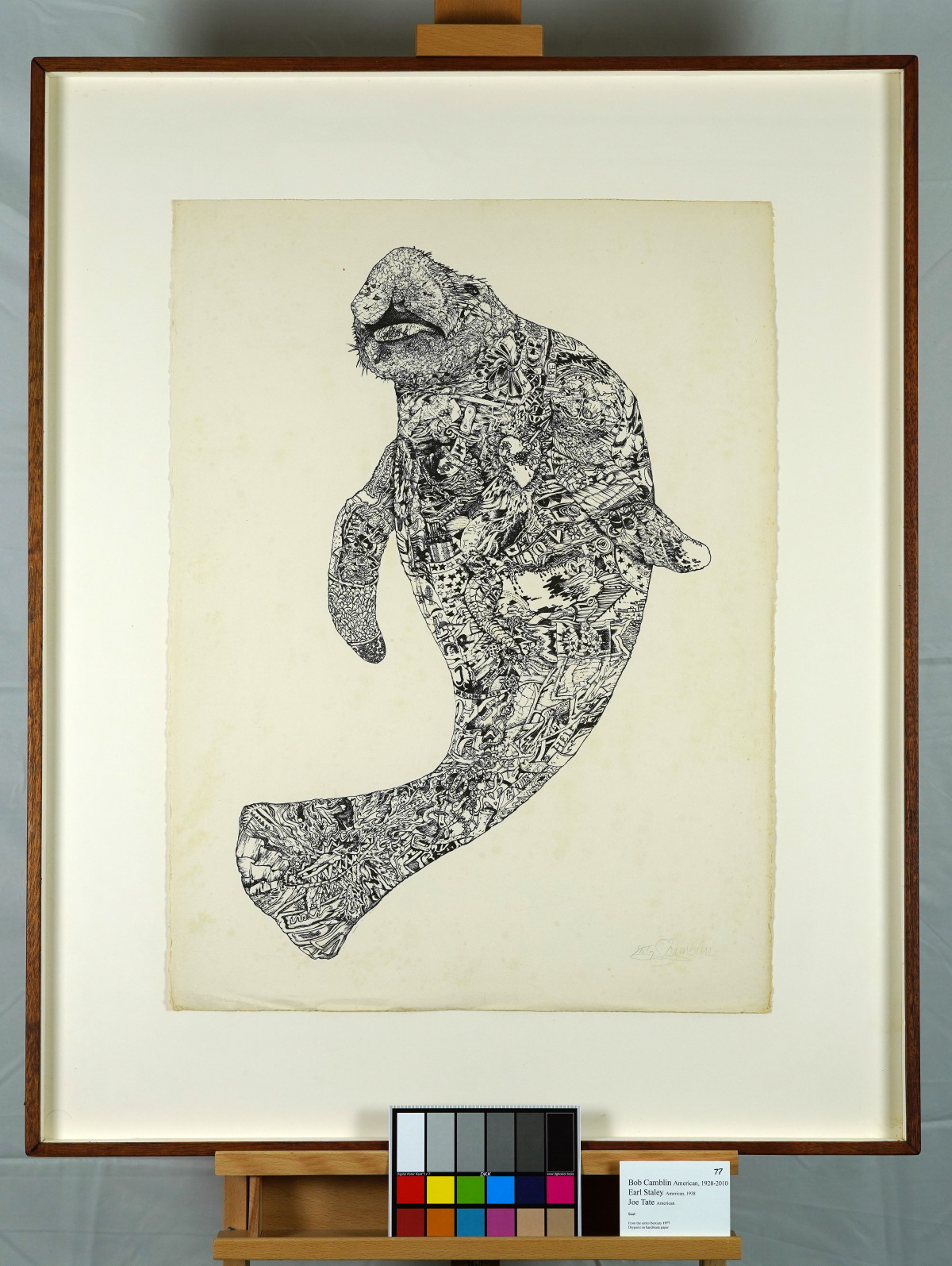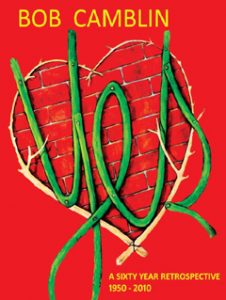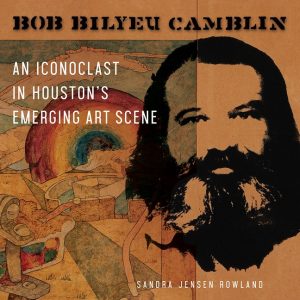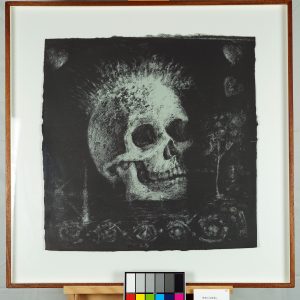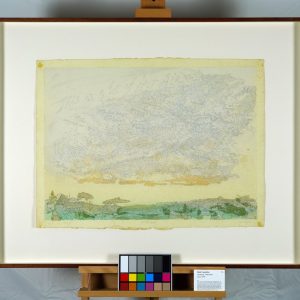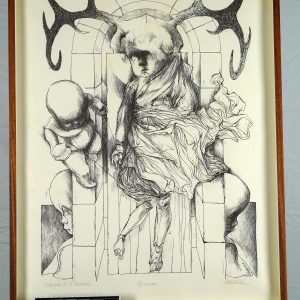Description
Seal, 1977Lithograph 2 chops LEE Little Egypt Enterprises
Signed Staley/Camblin
30 x 22 in. (image)
40.25 x 32.75 x 2 in. (frame)
original, includes certificate of authenticity from ArtTrust
The lithograph “Seal” is from the series Bestiary, a drypoint from Little Egypt Studios. This intricate artwork, featuring a manatee-like form with its body filled with a detailed array of illustrations and patterns, evokes a sense of whimsy and depth. The visual elements embedded within the body might symbolize the interconnectedness of nature and human influence, with each detail potentially representing a different story, culture, or ecosystem. The use of black and white emphasizes the contrast between the form of the manatee and the diverse imagery contained within it.
The choice of a manatee, often seen as a gentle, peaceful creature, juxtaposed with the complex and chaotic scenes, invites reflection on themes such as conservation, the impact of human activity on wildlife, and the blending of natural and artificial worlds. The artwork can be interpreted as a commentary on how animals carry the weight of human history, culture, and the environment’s shifting state.
The meticulous linework and stylization could draw connections to tattoo art or engravings, suggesting that the creature is etched with narratives much like cultural or personal histories are marked on human skin. This blending of natural form with detailed storytelling makes the piece a rich visual meditation on the layers of existence.
In Zen thought, simplicity often contrasts with complexity. The manatee, a symbol of tranquility and gentleness, could represent the true nature of existence—a simple, gentle being. However, its inner world is filled with chaotic imagery, suggesting the contrast between outward simplicity and inner complexity. This artwork may reflect the Zen idea that everything in the world is interconnected and contains multitudes, even something as seemingly straightforward as a manatee. It serves as a reminder of the layers within every living being and the endless interdependencies that make up life.
Zen often teaches to observe without attachment or judgment, so in looking at this complex interior, one might practice seeing without being overwhelmed by the details—acknowledging each without getting lost in any one part. This could serve as a metaphor for meditation practice itself, where distractions appear but do not demand full attention.
In the I Ching, the Hexagram for “Obstruction” (No. 39, Jian) comes to mind. It symbolizes a challenge or barrier that must be understood and transcended. The densely packed symbols inside the manatee could signify the obstacles or complications in life that cloud our perception. Yet, just as the I Ching advises perseverance and adaptability to overcome obstructions, the intricate patterns within the manatee might suggest that clarity and understanding arise not by avoiding complexity but by seeing through it.
Another possible hexagram is “Abundance” (No. 55, Feng), which represents fullness and richness, often linked with illumination and insight. The manatee, filled with diverse images, could signify the fullness of life experiences and the richness of being, where every experience contributes to a larger whole.
This artwork appears to merge themes of nature, humanity, and interconnectedness. The manatee, often a gentle and vulnerable creature, becomes a vessel for a wide range of symbols, possibly reflecting humanity’s impact on nature, the complexity of life, or the weight carried by endangered species. The contrast between the natural shape and the artificial, densely packed contents could be viewed as a meditation on how the simple beauty of the natural world is filled with—or perhaps obscured by—human-made elements.
The artwork encourages viewers to look deeper, suggesting that surface appearances hide a multitude of stories, experiences, and connections. It could represent the idea that within every entity lies a history, a cultural imprint, and a complex web of influences, both seen and unseen.
Stylistically, the piece evokes the tradition of detailed engravings or ink illustrations, reminiscent of early scientific illustrations or surrealist drawings that combine the real and the fantastical. It shares a lineage with artists who explore the relationship between nature and human culture, such as Albrecht Dürer’s engravings, which combine realism with symbolic meaning, or Salvador Dalí’s surrealist works, which depict the merging of different realities.
The choice to fill the manatee with various intricate designs could be linked to art movements like surrealism, where the boundaries of imagination are expanded, or even to tattoo culture, where the body becomes a canvas for storytelling. It could also be seen as a modern reinterpretation of the “grotesque” style from medieval art, where borders between the natural and fantastical blur.
In essence, the artwork embodies a confluence of nature, symbolism, and narrative, invoking traditional methods of fine line work while conveying a modern message about environmental consciousness and the layered complexity of existence.
*Shipping cost will vary, please inquire at sales@camblingallery.com before purchasing.
Currently ships from Oregon, USA
Member of artnet? Apply for a discount! Inquire about intergallery and permanent loans for museums.
From the series Bestiary, a drypoint on Twinrocker handmade paper
1 bat, 25 artist’s proofs, 1 printer’s proof, 3 LEE proofs, 35 edition
“Seal” was featured in his Yes Retrospective and in Sandra Jensen Rowland’s monograph, Bob Bilyeu Camblin – An Iconoclast in Houston’s Emerging Art Scene.
Reproductions of this drawing are available in multiple sizes!
Click here to use our high-resolution viewer!
This artwork is available with a non-fungible token to ensure traceability and transparency of provenance.
The royalty factor – Unlike traditional artworks, such as paintings, mosaics, statues, and the like, NFTs can be programmed to provide royalties to you every time the painting (and token) is sold and resold – for eternity. That mind-bending Camblin you sold could be worth millions one day and provide income for your great-great-great grandkids!
Anti-forgery – The central idea underpinning NFTs is that they are built on the blockchain, which is meant to offer advanced security. Think of it like an un-erasable and un-avoidable copyright.
Easy authentication – Another compelling aspect of NFT art and NFTs in general is the ability to quickly and easily authenticate items, as the record of ownership is scrupulously kept on the blockchain.
